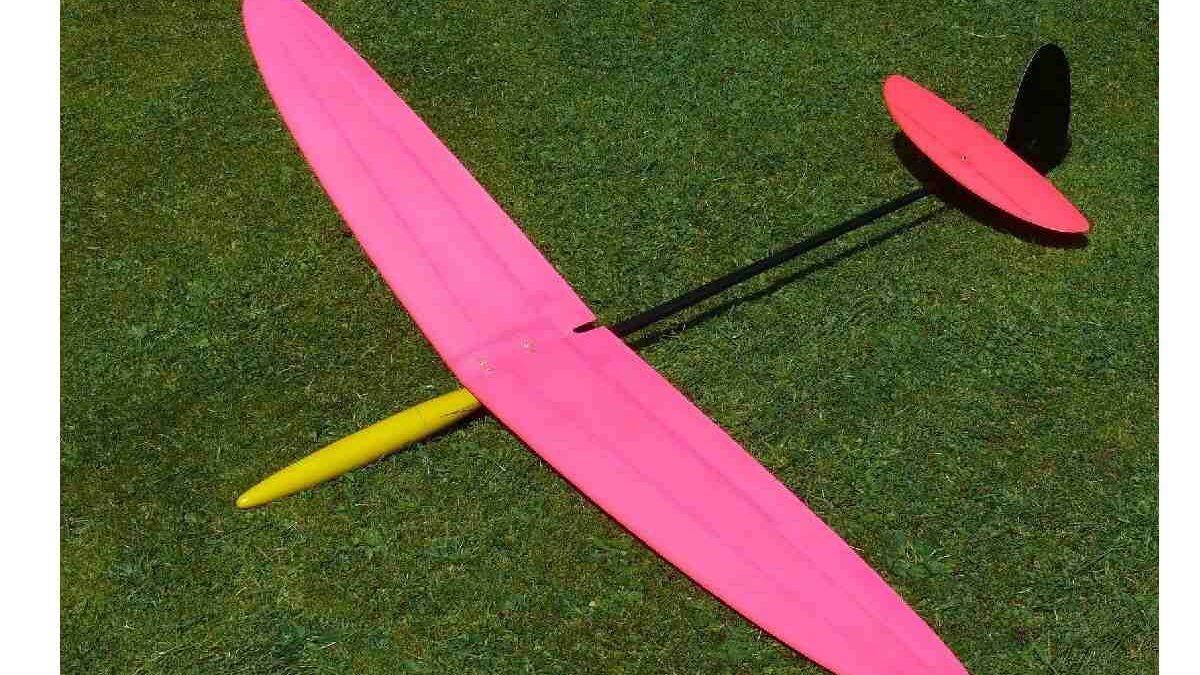Discus Launch Glider
The Discus Launch Glider (DLG) is a radio-controlled glider model launched using a “discus launch,” in which the glider remains held by the end of the wing. And the flyer spins rapidly before launching. Using this takeoff method, the average pilot can achieve a takeoff height of over 100 feet (30 m). With competitive competitors more than doubling that height. With record throws approaching the 300-foot (91 m) mark.
The handheld disc launch method became more popular than the older “spear style” launch, where the model glider remains launched over the arm like a spear. Throwing the discus is more accessible, more efficient, and less physically demanding than the javelin throw. After takeoff, flyers seek to lift through thermals or other updrafts to extend their flight time. In addition to launch height or length, competitions may include glider skill tests, landing accuracy, and timing.
Although some DLG designs use traditional built construction using balsa wood and sheeting. Most DLG models are now generally constructed from composite materials such as Kevlar, carbon fiber, and fiberglass. The fuselages are molded from Kevlar/Carbon and Epoxy, with the wings either developed as a hollow composite shell or vacuum-packed over a wire-cut foam core.
The modern DLG weighs around 9 or 10 ounces (255–283 grams) and has sophisticated aerodynamics. Most DLG models use aileron, rudder, and elevator controls, with the ailerons as flaps to change yaw for various flight modes and air brakes for landing. In addition, many pilots use programmable radio transmitters with complete mixing and flight mode capabilities to optimize performance and set flight patterns as perfectly as possible.
DLG models remain used for general recreational/sport and competition flying.
Table of Contents
What are Micro RC Gliders and Airplanes?
Disc Launch RC Gliders (DLG) are typically small to large radio-controlled gliders powered by a disc launch method from the tip of the RC glider dog wing. Gaining altitude without using the engine is a difficult feeling to describe. However, mother nature provides us with all the tools from thermal lift to wind power to give us hours of relaxation in nature.
What is the purpose of an elevator? It is to keep the plane in the air by resisting the effects of weight (gravity). Aircraft weight plays a vital role in the thrill factor of takeoff and something as basic as combat time and thermal lift.
Unfortunately, the simple fundamentals of importance (W = mg) for effective flight have been lost and overlooked in today’s RC glider and RC airplane models. Most models remain made of pressed EPO foam, which is highly durable, but at the cost of its weight.
Discus Launch RC Gliders (DLG)
Learning the art of catching thermals and understanding wind flow/direction. Using the rudder to control yaw, airspeed, increasing lift increases drag, and flight basics.
The difference in pressure between an aircraft wing’s upper and lower surfaces results in a force we call lift. Aerodynamics divides the energy produced by the glider’s wings into two parts. They call them “Lifts” and “Drags.”
Lift The aerodynamic force produced by the wings perpendicular (at right angles) to the incoming air current.
Drag: The aerodynamic force acting on the wings parallel (inline) with the incoming air stream.
Micro Bug
The Micro Beetle is a super slow radio-controlled micro-sized model airplane. This minor, adorable micro bug has remained designed for perfect slow flight performance. This little bug with short stubby wings and fuselage features a 10″ wingspan and a fine flying weight of 20 grams. The large wing area, resulting in low wing loading, contributes to maximum air time allowing for slow, graceful flights.
Fly on
Every human being has a level deep within his mind that will bring total peace. Meditation gives you that space between you and your body, between you and your mind. Flying RC gliders has proven to get tangible benefits, especially a calmer and more focused mind.
I found myself able to focus intensely on the task at hand. Better able to adjust the volume of the distracting noise against the background of the ever-increasingly stressful lifestyle we all encounter daily. If you are new to this fantastic RC hobby, you can find helpful information about building a hand launch glider or DLG. Also, find out what is the best DLG glider for beginners.
Conclusion
The art of sailing may take years of practice for some to fine-tune. But the experience and journey are pretty meditative and breathtaking. With RC gliders, the fun begins with knowing how to use natural forces such as wind, thermals, trees, altitude, heat, and cold. Be considerate of your surroundings, breathe fresh air deeply, and dance with nature.

